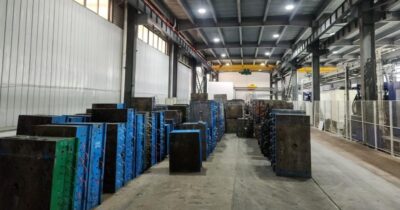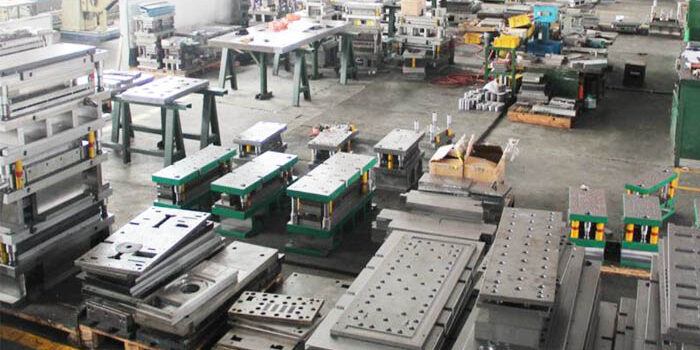What are the difficulties in mold management?
- Difficult to track maintenance
- Slow search due to confusing numbers
- Slow approval for loan and return
- Difficult to trace lost molds
- Difficult to track usage frequency
- Difficult to count the number of molds

RFID Mold Management Application
1.Mold inbound and outbound management
Functional points:
When the mold enters and leaves the warehouse, the label information is automatically read, and the system automatically registers the outbound time, operator, and destination;
Supports batch outbound, mold inventory, borrowing and returning registration and other processes;
Can be integrated with barcode/handheld terminal/channel gate machine.
Features:
Batch reading and fast identification can be achieved, and the efficiency is several times higher than the scanning method
Support UHF long-distance identification or HF close-range accurate identification; Support long-distance identification (1~10 meters)
Benefits:
Increase the speed of warehousing and retrieval, reduce manual registration and queuing;
Avoid wrong collection, missing collection or missing mold transfer records;
Automatically generate warehousing and retrieval logs for easy responsibility tracing

2.Production line usage monitoring and automatic collection of usage records
Functional points:
When the mold is enabled on the production line, it automatically identifies the activation time, equipment number, and team information;
The system records the duration, frequency, and batch of products produced each time the mold is used;
Real-time alarm for abnormal use and overload use.
Features:
Access the MES system through a fixed reader or handheld terminal at the workstation; upload data in real time to generate a “mold usage log”.
Benefits:
Avoid mixing or misusing molds and improve product consistency
Accurately record usage data to provide a data basis for quality traceability
Provide real data support for mold life management and lean production analysis.
3.Mold maintenance, inspection and repair management
Functional points:
Automatic warning after the cumulative number of mold uses/time reaches the preset threshold
The system reminds regular inspection, maintenance, and repair
Inspection data and maintenance records are automatically archived.
Features:
Data is recorded each time it is enabled, and the system dynamically determines the maintenance cycle based on usage;
Inspection can be operated with PDA or APP to achieve on-site electronic inspection.
Benefits:
Avoid abnormal downtime or product defects caused by mold maintenance beyond the due date;
Establish a standardized maintenance process to improve the quality of maintenance;
4.Mold search and positioning and anti-lost and anti-error management
Functional points:
Real-time tracking of mold location in large-scale factories;
Automatic alarm for abnormal movement (such as crossing the zone, theft);
The system displays the mold in storage/use/maintenance/transportation status.
Features:
RFID can be combined with positioning systems (such as UWB, Bluetooth AOA, RTLS, etc.);
The system background displays the mold location distribution map in real time
Benefits:
Eliminate the problem of chaotic stacking or missing molds
Reduce mold loss, misplacement and idleness
Improve the efficiency of cross-process/multi-factory mold allocation
5.Mold scrapping and life cycle management
Functional points:
Automatically count mold life data (such as number of uses, service life, maintenance frequency)
The system automatically determines whether the scrapping standard is met and automatically triggers the approval process;
Full records from procurement to scrapping form a complete life cycle data archive.
Features:
The label is bound to the mold data for a long time, and the information cannot be tampered with;
Supports integration with the ERP system and automatic docking with the asset ledger.
Benefits:
Clear scrapping standards to avoid product quality problems caused by overuse
Improve mold asset transparency and support cost accounting and report analysis
Avoid human intervention in mold life management